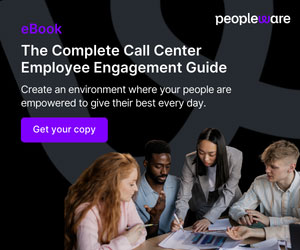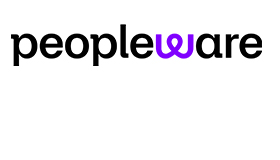Chris Dealy at Injixo provides a guide to workforce planning, helping you understand how to ensure that your organization maintains the right number of skilled employees to meet future business demands effectively.
What Is Workforce Planning?
Employees are the most important element of every organization. And the most basic thing you’ve got to get right is having the right number of them on the payroll.
Even if you have the means to forecast workload with 100% accuracy and perfectly optimize your schedules around customer demand, if you simply have the wrong number of employees, you’re in trouble.
You can’t hire and train people overnight, so it’s vital to always have a clear picture of your staffing needs in the long term, not just for the next couple of months, so you can plan ahead in a deliberate, timely fashion.
The objective of workforce planning is to address this challenge. Workforce planning ensures that your organization employs the right number of people with the right skills to cope with the anticipated scale of the business in the long term.
But how does it work? How far into the future should workforce planning look? Is there technology to help? And does every business need to do it? Read on to find out.
Do You Need It?
Workforce planning is not a trivial exercise, so it’s a good idea to determine how important it is for your organization so you can invest the appropriate level of effort. Factors that determine the importance of workforce planning include:
Growth or Decline
Some businesses have very stable customer numbers, transaction volumes, and sales revenues. For example, those in the utilities, food production, and healthcare sectors. Businesses in sectors like technology, entertainment, and retail typically experience greater fluctuation in business levels.
Seasonality Variations
Variations in staffing needs by season make workforce planning more complex. You need to avoid understaffing during peak season and avoid overstaffing during quieter periods.
Retail and travel are classic examples of a seasonal business. Industries like insurance, waste management, and security services suffer less from seasonal variations.
Innovation
If your company is constantly launching new products and discontinuing old ones, the need for workforce planning will be greater.
Examples include consumer electronics, software, vehicles, and fashion. This is less of an issue in sectors such as building materials, heavy machinery, transport, and telecoms infrastructure.
Competition
If you are providing products or services for which there is no alternative, for example in the public sector, it is desirable but not critical to have a solid workforce plan. On the other hand, workforce planning is vital in highly competitive sectors such as airlines, e-commerce, fast food, and financial services.
Staff Attrition
According to the Chartered Institution of Personnel & Development, average UK staff attrition was 34% in 2023. There were, however, major variations by industry. Hospitality suffers attrition of more than 50%, while the figure for public administration is less than 25%.
Technology
AI (artificial intelligence) and other technological innovations have the potential to dramatically reduce the number of employees needed to run the business.
The impact of technology is greater in some sectors than others. In contact centres, AI-powered chatbots and virtual assistants are handling a growing proportion of customer inquiries, and this is gradually reducing the required headcount.
On the other hand, innovations such as AI are not having as much effect in sectors such as nursing, education, and hospitality.
If your business is not affected by any of these factors, you’re in luck: workforce planning is a ‘nice to have’. If it is affected, you definitely need to do workforce planning.
Failing to do proper workforce planning introduces hidden costs and risks. For example, you could find you have insufficient staff to cope with growth.
You could find that you have to lay people off because you continued hiring even when changes in technology were likely to reduce staffing requirements. You may find yourself hiring and training in ‘panic’ mode, competing for scarce talent because you didn’t hire early enough.
What Are the Steps of Workforce Planning?
The workforce planning process can be broken down into 5 basic tasks.
1. Forecast Workload
The first step is to produce a long-range forecast of your organization’s activity levels, extrapolating trends and patterns from your organization’s history.
Since the number of required staff is a function of both activity levels and average processing time, it’s important to forecast both of these drivers.
Pro tip: Ideally, your forecast will drill down to intraday intervals as well as predict monthly and weekly totals. This will enable you to calculate staffing with the same rigor that you use for short-term forecasting.
You’ll be able to determine full-time equivalent (FTE) requirements at a more granular level and thus identify the shifts you need to hire for, not just total FTEs.
Until recently, interval-level long-range forecasting required so much effort that workforce planners were forced to compromise and accept ‘directionally correct’ monthly totals.
Not any more! AI-based forecasting tools can forecast for 24 months into the future down to interval level, with almost zero user effort.
2. Apply Business Intelligence
The second step is to fine-tune the forecast by applying ‘business intelligence’. This is about identifying reasons why the future will be different from the past and adjusting the forecast of activity levels and/or average processing time as required.
Consider upcoming events and trends that didn’t occur in the history that you used in step 1. Examples include product launches, promotional events, price changes, and technological changes such as the introduction of automation and customer self-service.
Business intelligence depends on collaboration with departments whose activities can affect workload – for example, marketing and IT.
3. Calculate Required Staff
Once the forecast of demand has been established, the next step is to convert activity level and average processing time into the number of full-time equivalent (FTE) employees that you will need.
The simplest way to do that is to multiply the weekly activity level by average processing time to calculate the total workload, then divide by the number of hours worked per week by a full-time employee.
The required FTE count, together with data about employment costs form inputs to the budgeting process.
If you created an interval-level forecast in step 1, you could apply the same detailed, accurate staffing requirement that you use when building a forecast as an input to the scheduling process.
This will enable a more accurate staffing calculation. For example, in a service operation with queueing customers, you would use the Erlang C method for best results. This isn’t possible when working with weekly or monthly totals.
4. Estimate Available Staff
The next step is to estimate how many of your existing staff will still be on the payroll in the time period you’re planning for. Start by finding the total current number of employees.
You should be able to get this information from your human resources (HR) system or your workforce management (WFM) system.
Make sure that you only count the employees you intend to schedule. Typically this will be the frontline employees, but some companies also schedule coaches, team leaders, etc.
Then you should calculate the number of FTEs in your workforce. For example, if a standard working week is 40 hours, an employee who is contracted to work 20 hours per week counts as 0.5 of an FTE.
Finally, you must adjust for attrition, i.e. the fact that a percentage of your employees will leave. If you experience 20% annual attrition, only 80% of the staff you had at the beginning of the year will still be with you by the end.
Attrition is a fact of life in every business and while it can be optimized to a certain extent, achieving zero attrition is practically impossible.
Pro tip: Be careful to differentiate between voluntary attrition (where employees choose to leave) and involuntary attrition (where employees are terminated by the organization). The trends and patterns will differ markedly between the two types, so you should analyze them separately.
5. Fill the Gaps
The final step appears to be simply a matter of subtracting the available staff number (step 4) from the required staff number (step 3) and then hiring and training sufficient people to close the gap.
That isn’t a trivial exercise and will entail detailed budgeting and a business case. But that’s not the only complication. As explained in the section Do you need it? above, many businesses experience variability in staffing requirements across the year.
Should you staff up to the peak month or the quietest month? If the latter, how do you close the gap for the busier months?
It’s possible to close the gap without taking on permanent employees by using BPOs (business process outsourcers), seasonal workers, and temporary staff. Another option is to introduce more flexible working contracts and techniques like annualized hours.
The best way to close the gap can only be determined in the light of your company staffing strategy and the emphasis that you place on customer experience, cost optimization, and avoiding employee burnout.
You can read more about this fascinating topic in our blog post Contact Centre Forecasting Fundamentals Part 3: Closing the Staffing Gap. It is written from the perspective of contact centres, but the principles apply across all industries
All of the steps in workforce planning are important, but the first 3 (forecast workload, apply business intelligence, and calculate required staff) are critical. If you don’t do a good job with these, the rest of the process is jeopardized.
Workforce Planning Time Horizon: What’s the Sweet Spot?
A survey conducted revealed that by far the most common time horizon for long-term forecasting is 12 months.
On further investigation, we realized that the majority of respondents planned for the entirety of the coming year during the current year.
That prompts the question: how far into the future do you need to forecast to produce a viable workforce plan in a typical business?
1 Year?
A 12-month forecast might seem sufficient, but in practice, it might fall short. Organizations typically begin the workforce planning process weeks or months in advance. If your forecast can only predict up to 12 months ahead, you won’t be able to plan for the whole of next year.
5 Years?
The further into the future you look, the greater the uncertainty of any forecast. A forecast that looks 5 years ahead is very unlikely to be accurate in the later years.
A lot can happen in 5 years. For example, most democratic countries have a general election at least once every 5 years.
2 Years?
In our experience working with workforce planners, finding the right balance between long-term accuracy and flexibility was key.
After researching our customer needs across different industries, we determined that a 2-year horizon is the sweet spot for most use cases. A 2-year horizon covers the whole of next year, even from the start of the current one.
Workforce Management Applications: What to Look For
A WFM tool is an indispensable asset for workforce planning. Not all WFM systems are created equal, so there are some features that you should have on your shopping list if you want to hit the workforce planning sweet spot:
- 2-year forecasting capability
- 2-year forecast down to interval level to provide insights about the shifts that you will need to fill
- Ability to add business intelligence to account for known upcoming business changes, external events, and technology updates that the historical data cannot predict
- Ability to calculate staffing to the same level of granularity and precision as short-term forecasting
Points to Remember
- Employees are the backbone of every organization
- Accurate workload forecasting and optimized scheduling are vital to success
- But to schedule employees efficiently, they must be on the payroll in the first place. This is where workforce planning comes in
- Unless your business exists in an unusually stable environment, workforce planning is vital to success, because recruiting and training new employees take time and effort
- Ideally, you will be able to plan for the whole of the coming year, which means a 24-month forecasting horizon
- Looking further ahead than 2 years introduces risk, because the further into the future you look, the greater the uncertainty
- A 2-year forecast down to interval level will permit you to go one step beyond a basic FTE calculation. You’ll be able to calculate future staffing requirements accurately. And you’ll have an idea of the shifts you need to hire for
- Look for a WFM application that supports this approach to long-range planning
This blog post has been re-published by kind permission of Peopleware – View the Original Article
For more information about Peopleware - visit the Peopleware Website
Call Centre Helper is not responsible for the content of these guest blog posts. The opinions expressed in this article are those of the author, and do not necessarily reflect those of Call Centre Helper.
Author: Peopleware
Reviewed by: Megan Jones
Published On: 10th Sep 2024 - Last modified: 13th Jan 2025
Read more about - Guest Blogs, Chris Dealy, Peopleware






 Peopleware is the award-winning, multi-channel cloud workforce management application for contact centers and customer support. Over 300 customers, ranging in size from 50 to over 4,000 seats, trust Peopleware to bring work and demand in perfect balance while embracing the constant change in their business. With Peopleware, you spend less time and effort on manual forecasting and scheduling, while maximizing efficiency and focusing on what really matters: your people and customers.
Peopleware is the award-winning, multi-channel cloud workforce management application for contact centers and customer support. Over 300 customers, ranging in size from 50 to over 4,000 seats, trust Peopleware to bring work and demand in perfect balance while embracing the constant change in their business. With Peopleware, you spend less time and effort on manual forecasting and scheduling, while maximizing efficiency and focusing on what really matters: your people and customers.









